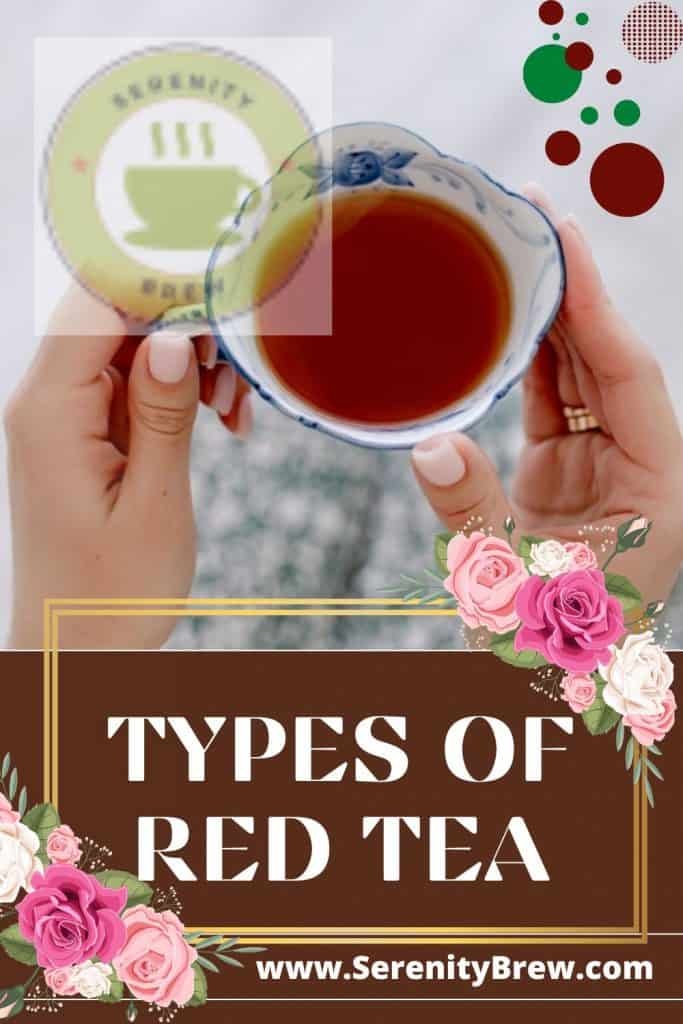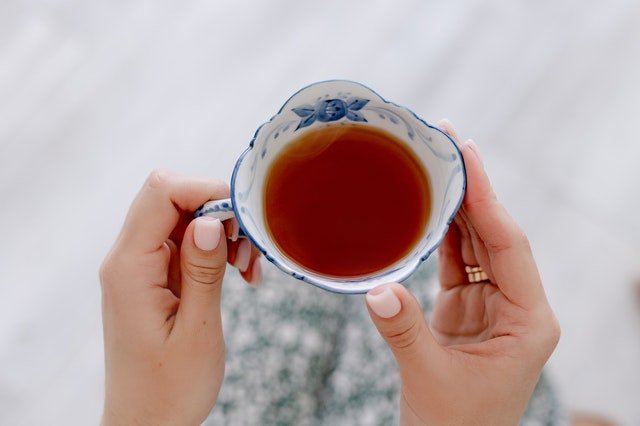
There are many types of PuErh red tea and many times we do not understand them and it makes us think that we do not know what we want to drink. However, as in many subjects, it is very easy to understand if it is explained to you well. We will help you better understand the wonderful world of red tea through this blog in which we explain the types and classification of red tea that exist.
In this Blog we are going to dedicate ourselves exclusively to the classification and types of red tea
Well, let’s go! and we start
Types of red teas by their Origin
Red tea is defined as tea that undergoes a microbial fermentation process. Red tea is normally produced in China and the area where it is most produced is in the southeastern region of China. Specifically in the Chinese regions of Yunnan, Hunan and Guangdong as well as the bordering regions of the countries Vietnam, Laos and Burma.
Since 2008, the only region that can use the name of Pu Erh is the red tea produced in the Yunnan region, since it is protected as a “product with geographical indications”, a kind of denomination of Origin.
Within the Yunan province, Pu Erh is produced in almost all counties, but the best known area is the “Six Great Tea Mountains” (how beautiful!) located northeast of the Mekong River, known for its climates and environments that provide excellent conditions for the Pu Erh and produces unique flavors.
The most common is that you know only Pu Erh since the rest of the red teas are scarcer.
Classification by cultivation method
Perhaps equal to or even more important than region or even grade in the classification of puerh is the method of cultivation. Puerh tea can come from three different cultivation methods:
- Plantation shrubs : Cultivated tea trees, from the seeds or cuttings of wild tea trees and planted at relatively low altitudes and flatter ground.
Tea produced from these plants is considered inferior as some lack pleasant flavors, and can be bitter and astringent.
- Wild trees: Most producers claim that their puerh is from wild trees, but this is often false since most of them disappeared for lack of attention long ago.
They are considered to produce better tasting teas due to their higher levels. These trees produce better-tasting teas because they have a higher concentration of polyphenols than plantation bushes.
- Old wild trees : They are old wild trees, cultivated without human intervention, they are the most valued puerh teas.
They are considered to have deeper and more complex flavors and even with notes of camphor or mint due to the fact that these trees coexist with the Camellia Sinensis.
Determining if a tea is old wild is almost an impossible mission and there is a large amount of tea faked as wild trees because, logically, the price is higher.
You also need to know Chinese, as their products are often labeled only in Chinese and their complicated terminology (“tall tree”, “uncultivated”, “wild”, etc.)
Do not trust that the word gushù comes in the cakes because it is found both in the wild variety cakes as well as the mixed ones.
The most common is that the Pu Erh that you know are from plantation bushes, but do not despair because there are many Pu Erh within this category that are truly great.
Degree
The Pu’er can be classified into ten or more grades. Generally, grades are determined by the size and quality of the blade, with higher numbered grades signifying bigger and better soft blades.
But you can’t really trust it either as each manufacturer has their own ratings and although different grades have different flavors, many manufacturers mix various grades to balance flavors.
The classification by grade is a technical classification that is mostly used for sales between manufacturers and wholesalers and unfortunately it is not very reliable and usually “disappears” during the marketing of the product and does not appear on any labeling.
Season
The harvest season is also important in the taste of the tea, although it is less important than in the case of white or green tea.
As with all teas, it is considered that the spring harvest is better than the autumn harvest and of course the summer harvest.
By fermentation process
It is the main differentiating element of red tea , since two completely different products in terms of quality can be obtained with the same raw material.
If in other teas the differentiating element in terms of quality is usually the raw material itself (which tea leaf or bud, when it has been harvested, etc.), in the case of red tea there is fermentation, which is a process where transform some products into others. How well and intensely this transformation is carried out is what gives the flavors and nuances to the tea and what makes a Pu Erh good or bad.
Originally the fermentation process was only carried out gradually and over many years, but in 1973 the Kumming tea factory created a new process that shortens maturation times by performing accelerated fermentation.
That is why we divide the Pu erh into two categories:
- Pu erh crudo (ShengCha) or Raw
- Ripe or cooked pu erh (ShuCha) or Ripe
Both categories are created from máochá , a mostly unoxidized green tea processed from a “big leaf” variety of Camellia sinensis (C. sinensis assamica) found in the mountains of southern Yunnan.
There are two differences in Pu Erh compared to the rest of the green or black teas. The first one is that it is used from the broad-leaved varieties found mostly in the southern provinces of China and is harvested as a bud and 3-4 leaves, while green tea is harvested as a bud and 1-2 leaves. This is because the oldest leaves are the ones that give the qualities of pu’er tea.
In the case of Raw Pu Erh (ShengCha), the maocha is pressed for its natural maturation, which is where the fermentation of the tea actually takes place, turning it from green tea to raw Pu Erh. Sometimes it is sold directly raw, without pressing, as a loose leaf, which only requires two to three years of maturation since the speed of fermentation is faster as it is not pressed.
The aging process depends on how the sheng puerh is stored, which determines the degree of fermentation and oxidation achieved.
In the case of cooked Pu Erh, the maocha is fermented in a controlled manner, that is, controlling oxygen, temperature and humidity to optimize the enzymatic activity of the yeasts. In this way , maturation usually takes between 45-60 days compared to two three years for Raw Pu erh.
Later it can be marketed loose or pressed in different formats.
There is a lot of controversy about which Pu Erh is better. We think that the mature, cooked, Ripe or ShuCha Pu Erh has achieved a very acceptable average level of quality.
Raw Pu Erh is an artisanal tea and artisanal does not always mean excellent or good . In the Pu Erh Raw there are great differences between one Pu Erh and another although we must recognize that when you find one well treated we take our hats off to it.
To get a raw or raw puerh in good condition, you have to go to professional vendors who can advise you.
Classification by shape
Although currently the most common is to buy loose Pu erh, it is also still marketed in a variety of forms depending on whether it is pressed.
Pu-ehr tea takes a variety of forms:
- Bingchá (Disco tea ) round, flattened, with a discrete shape. Size ranges from 123g to the large 5000g or even more, with 357g, 400g, and 500g being the most common.
- Túochá (bowl-shaped tea), shaped like a bowl. The ranges go from 7g to 3000g or more, the most common are 123g, 250g, 500g.
- Zhuanchá (brick tea), rectangular-shaped tea, between 123g, 250g, 500g, and even 1230g.
- Fangchá (square tea ) usually in 123g or 200g sizes.
- Jinchá (mushroom tea) shaped like a túo, the shape is made for consumption in Tibet and usually weighs between 250g and 300g.
pure pu erh or mixture
So far we have referred to red teas and pure Pu Erh, but there are also delicious mixes of Pu Erh with spices, fruit or other ingredients on the market.
Pu erh is a product that allows other ingredients to be added. Its intense earthy flavor can be nuanced with vanilla, cinnamon and even sweet flavors such as pineapple or chocolate.
Conclusion

Red teas are teas that undergo microbial fermentation (not oxidation) that gives them an unmistakable aroma or flavor.
Among the red teas is Pu Erh, which is a red tea from the Yunnan province protected as a “product with geographical indications”. Other red teas from China or from other countries cannot be called Pu Erh.
Most of the red teas are from cultivated bushes, although those that are considered to be of better quality are the very rare and very expensive pu erh de gushù, from old wild trees.
As with all teas, spring teas are considered better than autumn teas. The fermentation and maturation process of the pu erh is what most differentiates them from each other. There are two fermentation processes:
Pu Erh crude, raw or SengCha that is made by hand. Ripe or cooked pu erh (ShuCha) or Ripe that is made industrially. Regardless of the production process, Pu Erh can be presented in different ways:
- Loose: the most common and comfortable
- Pressing: disc-shaped, brick-shaped, square-shaped, mushroom-shaped, etc.
